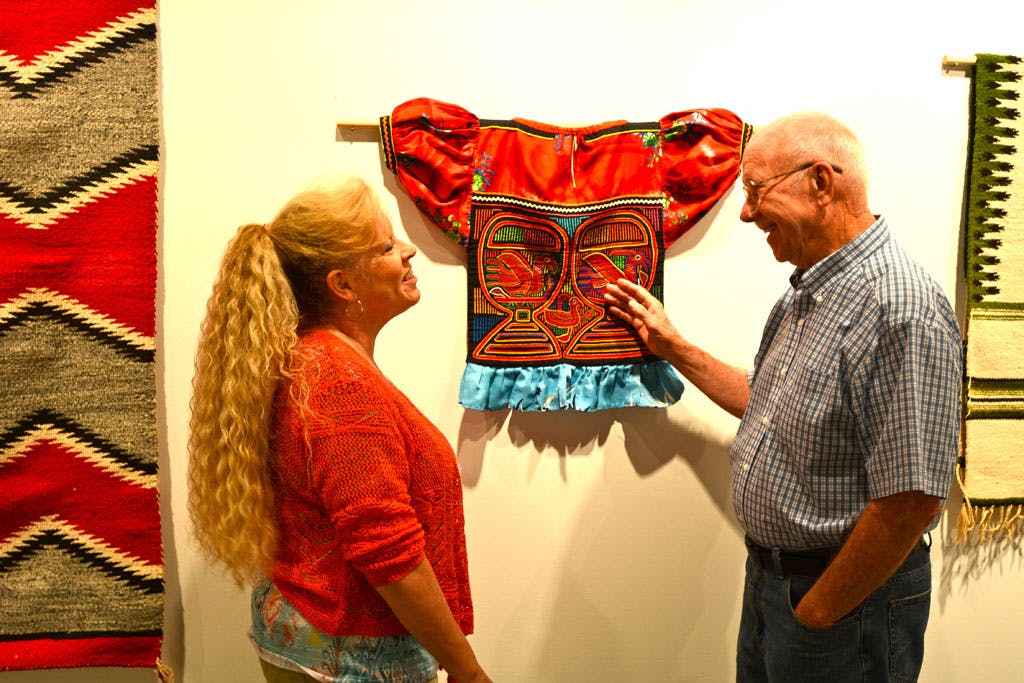Items Are Part of Collections Owned by Christine Hadley Snyder, Neil Snarr and Stephen Potthoff
Art may take on many forms as tapestries, rugs, weavings and even clothing can communicate an artist’s inspiration, message or representation of a native culture. Wilmington College is featuring an exhibit, titled “Fiber Art: International Textiles,” at Harcum Art Gallery this summer.
(PICTURED) Neil Snarr gives Joni Streber of WC's Watson Library a sneak preview of the new exhibit in Harcum Art Gallery that's set to open Thursday. He is describing an intricately stitched molas he purchased in Panama. The highly detailed garment took a woman from the Kuna Islands a month to create.
An opening reception will be held Thursday (June 22), from 6 to 8 p.m., in the gallery, which is located in the Oscar Boyd Cultural Arts Center, College and Douglas streets. The event is free of charge and light refreshments will be served.
The show will run through Aug. 5 with normal gallery hours on weekdays, from 9 a.m. to 5 p.m. (closed Friday afternoons), and by special arrangement coordinated by gallery curator Hal Shunk, professor of art. The gallery also will be open prior to the College-Community Summer Theatre’s production of musical, The Addams Family, July 13, 14, 15 and 16.
The more than 20 pieces in the show belong to the collections of three persons with close ties to Wilmington College: Christine Hadley Snyder, former chair of the Board of Trustees; Neil Snarr, emeritus professor of sociology; and Stephen Potthoff, associate professor of religion and philosophy.
Snyder’s eight textiles in the exhibit originate from Latin American countries. Two are molas — the front and back panels used in the traditional outfit of Kuna women — with bird designs from the Kuna Islands off Panama. She also has three woolen rugs from southern Mexico, Ecuador and Bolivia, as well as two huipils (blouses) from Guatemala and an embroidered stitching from Paraguay.
Snarr’s eight pieces of native art in the exhibit come from six cultures. Two pieces of reverse applique, one framed and another a blouse, are from the Kuna Islands. He said the technique used in creating molas might incorporate as many as 10 different colored materials. He also is featuring a pair of brightly colored, woolen Navajo rugs, a framed cross-stitch piece from Palestine and a Mexican poncho.
Potthoff’s contribution to the show includes seven Persian rugs featuring various themes ranging from the Tree of Life to the Garden of Eden.
